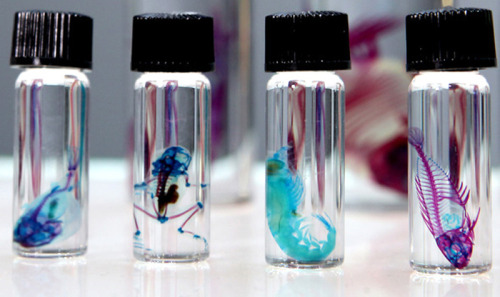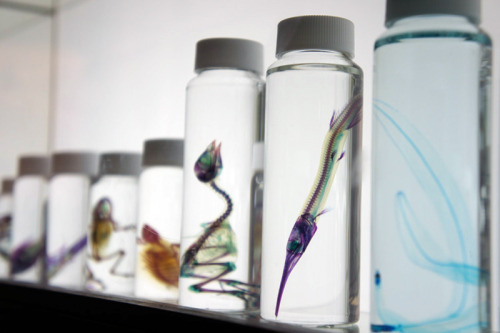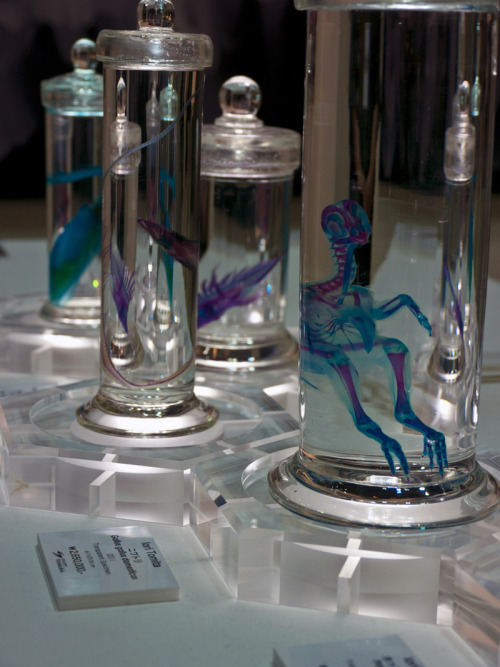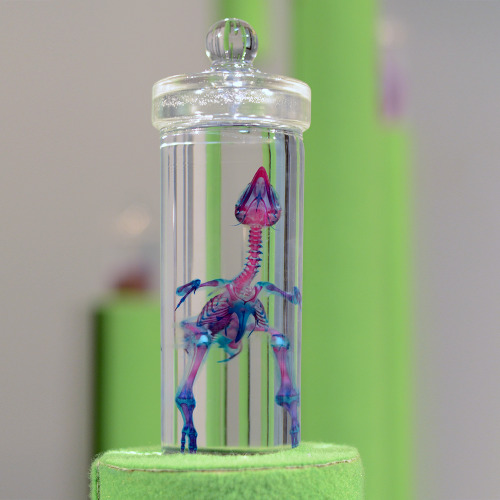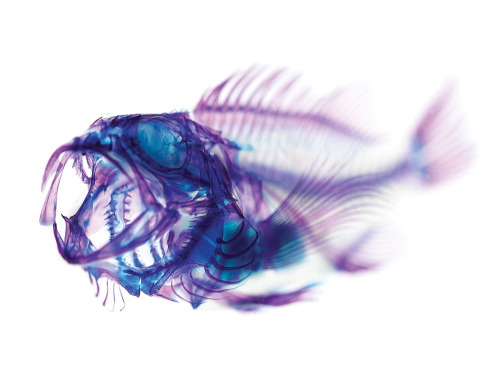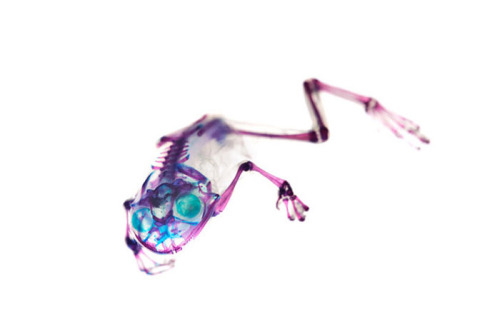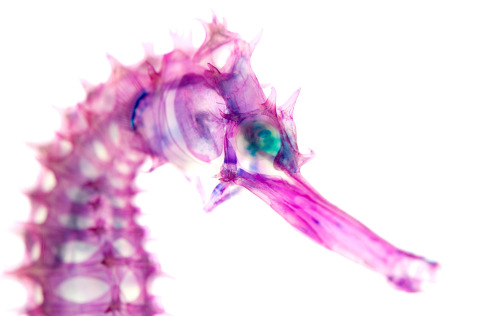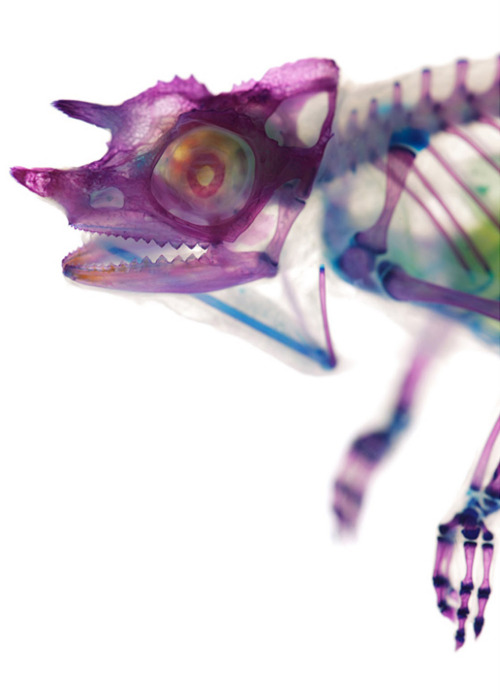Spectacular Collision Of Stars Will Create New Star In Night Sky In 2022

Spectacular collision of stars will create new star in night sky in 2022
1800 years ago two stars were coming together in a huge cataclysmic explosion. The light from that collision will finally arrive on Earth creating a new star in the night sky - dubbed the ‘Boom Star’ - in an incredibly rare event which is usually only spotted through telescopes. Before their meeting the two stars were too dim to be seen by the naked eye, but in 2022, the newly formed Red Nova will burn so brightly in the constellation Cygnus that everyone will be able to to see it. For around six months the Boom Star will be one of the brightest in the sky before gradually dimming, returning to its normal brightness after around two to three years. Read more
More Posts from Saients and Others

As a paleo-artist, one of my biggest pet peeves are prehistoric whales reconstructed not as whales but as sinewy, snarling, shrink-wrapped marine reptiles. It’s just not a plausible reconstruction, even if it’s highly speculative, and it paints an incorrect image in the public eye. Granted, this is a struggle I’ve exlpored in all forms of paleo-art and reconstructive illustration. But the whales have really been getting to me recently.
Here are some recontructions of Basilosaurus, if you don’t know what I mean (one by Karen Carr, the other by an artist I could not determine):


These snakey, reptilious reconstructions may stem from the fact that Basilosaurus, one of the first early cetaceans to be found, was believed to be a reptile when first discovered (hence the name). Maybe we simply haven’t fully shaken that mindset.
But still! Even the damn Smithsonian, which has such a wonderful collection of ancient cetaceans, is at fault in this:

Don’t even get me started on their recently-closed dinosaur hall. Thank the lord they’re finally renovating that dated piece of crap.
I have struggled to find a way to reconstruct these animals so that they are just a little bit more believeable. Up top I’ve done a really really quick sketch of Dorudon. I tried to not only make its body more streamlined and whale-like (because Dorudon has a lovely, almost but not quite modern-looking skeleton), but I also tried to give it markings similar to what we find on modern cetaceans for camouflage. Because hey, who’s to say they didn’t have ‘em? I tried to make them familiar but not directly copied from any modern species.
Aaaaand end rant.

The world’s smallest snowman is only 2.7 microns tall (for comparison, a human hair is 75 microns thick). To create it, scientists stacked 3 tiny silica spheres, added a nose and arms made of platinum, and cut the eyes and mouth with a focused ion beam. Source


Cristobalite, Hematite
SiO2, Fe2O3
Locality:
Caspar quarry, Bellerberg volcano, Ettringen, Mayen, Eifel, Rhineland-Palatinate, Germany
An interesting homoepitactic intergrowth from brown and black hematite
Photo: Michael Förch
Cristobalite is a silica polymorph that is thermodynamically stable only at temperatures above 1470°C, up to the melting point at 1705°C, at atmospheric pressures. It commonly metastably persists or even forms at much lower temperatures in silica-rich volcanic and sedimentary environments. It can form crystals in cavities, probably vapour-deposited, or spherulites in obsidian or other silicic volcanics.
Hematite is rather variable in its appearance - it can be in reddish brown, ocherous masses, dark silvery-grey scaled masses, silvery-grey to black crystals, and dark-grey masses, to name a few. What they all have in common is a rust-red streak.




Victoria LaBarre was climbing out of a canyon and into a bright, vast, seemingly lifeless landscape when she started to experience an astronaut’s nightmare.
“Suddenly,” she said, “I couldn’t breathe.”
The symptoms were real — maybe from claustrophobia, or from exertion at high altitude. But LaBarre didn’t unlatch her helmet to get a breath of fresh air because, in this simulated Mars exercise in the Utah desert, she was supposed to be an astronaut. The canyon was standing in for Candor Chasma, a 5-mile-deep gash in the Red Planet’s surface. On Mars, there’s no oxygen in the air — you do not take off your helmet.
So, instead, LaBarre radioed for help from fellow members of Crew 177. The team of students and teachers from a Texas community college had applied together to live and work for a week this spring in a two-story metal cylinder at the privately run Mars Desert Research Station near Hanksville, Utah.
Elijah Espinoza, a freshman assigned to be a crew engineer and geologist for the week, heard LaBarre’s call and walked her through some breathing exercises.
“I think that’s really one of the best things about Mars — the teamwork,” said LaBarre.“I don’t think you could live without it.”
To Prepare For Mars Settlement, Simulated Missions Explore Utah’s Desert
Photos: Rae Ellen Bichell/NPR
lab partner: *hands me precisely 1 mole of a substance*
me: *vine voice* an avogadro!!! thanks!!




New comic! (link)
I’m going to be honest, this it the most I have ever used the science courses I took in undergrad. Glad all those thousands of dollars finally paid off.










Newest LIGO Signal Raises A Huge Question: Do Merging Black Holes Emit Light?
“The second merger held no such hints of electromagnetic signals, but that was less surprising: the black holes were of significantly lower mass, so any signal arising from them would be expected to be correspondingly lower in magnitude. But the third merger was large in mass again, more comparable to the first than the second. While Fermi has made no announcement, and Integral again reports a non-detection, there are two pieces of evidence that suggest there may have been an electromagnetic counterpart after all. The AGILE satellite from the Italian Space Agency detected a weak, short-lived event that occurred just half a second before the LIGO merger, while X-ray, radio and optical observations combined to identify a strange afterglow less than 24 hours after the merger.”
Whenever there’s a catastrophic, cataclysmic event in space, there’s almost always a tremendous release of energy that accompanies it. A supernova emits light; a neutron star merger emits gamma rays; a quasar emits radio waves; merging black holes emit gravitational waves. But if there’s any sort of matter present outside the event horizons of these black holes, they have the potential to emit electromagnetic radiation, or light signals, too. Our best models and simulations don’t predict much, but sometimes the Universe surprises us! With the third LIGO merger, there were two independent teams that claimed an electromagnetic counterpart within 24 hours of the gravitational wave signal. One was an afterglow in gamma rays and the optical, occurring about 19 hours after-the-fact, while the other was an X-ray burst occurring just half a second before the merger.
Could either of these be connected to these merging black holes? Or are we just grasping at straws here? We need more, better data to know for sure, but here’s what we’ve got so far!
-
 coreysilver1 liked this · 11 months ago
coreysilver1 liked this · 11 months ago -
 dourgerunevic liked this · 1 year ago
dourgerunevic liked this · 1 year ago -
 nooradeservedbetter reblogged this · 2 years ago
nooradeservedbetter reblogged this · 2 years ago -
 explorearound liked this · 3 years ago
explorearound liked this · 3 years ago -
 thomasbrisenio reblogged this · 3 years ago
thomasbrisenio reblogged this · 3 years ago -
 nealmcclure liked this · 4 years ago
nealmcclure liked this · 4 years ago -
 vikapediathat liked this · 4 years ago
vikapediathat liked this · 4 years ago -
 sleepydragoninc reblogged this · 4 years ago
sleepydragoninc reblogged this · 4 years ago -
 dahliavandare reblogged this · 5 years ago
dahliavandare reblogged this · 5 years ago -
 superboyconner reblogged this · 5 years ago
superboyconner reblogged this · 5 years ago -
 ginjewboi liked this · 5 years ago
ginjewboi liked this · 5 years ago -
 klarckt liked this · 5 years ago
klarckt liked this · 5 years ago -
 dailydemonolatry reblogged this · 5 years ago
dailydemonolatry reblogged this · 5 years ago -
 knowledgeistreasure reblogged this · 5 years ago
knowledgeistreasure reblogged this · 5 years ago -
 callide liked this · 5 years ago
callide liked this · 5 years ago -
 alysettenymphaneth reblogged this · 5 years ago
alysettenymphaneth reblogged this · 5 years ago -
 alysettenymphaneth liked this · 5 years ago
alysettenymphaneth liked this · 5 years ago -
 abbottisthedeathprocess liked this · 5 years ago
abbottisthedeathprocess liked this · 5 years ago -
 wellthatisbloodyfantastic liked this · 5 years ago
wellthatisbloodyfantastic liked this · 5 years ago -
 notyourcaptain liked this · 5 years ago
notyourcaptain liked this · 5 years ago -
 smallfryingpan liked this · 5 years ago
smallfryingpan liked this · 5 years ago -
 beckalouu liked this · 5 years ago
beckalouu liked this · 5 years ago -
 celeste-tyrrell liked this · 5 years ago
celeste-tyrrell liked this · 5 years ago -
 firebirdtransam68 liked this · 5 years ago
firebirdtransam68 liked this · 5 years ago -
 i-s-d-m-8 liked this · 5 years ago
i-s-d-m-8 liked this · 5 years ago -
 xerohourcheese liked this · 5 years ago
xerohourcheese liked this · 5 years ago -
 re-bumble liked this · 5 years ago
re-bumble liked this · 5 years ago -
 bradburymeinfire reblogged this · 5 years ago
bradburymeinfire reblogged this · 5 years ago -
 electricbeegalo liked this · 5 years ago
electricbeegalo liked this · 5 years ago -
 bradburymeinfire liked this · 5 years ago
bradburymeinfire liked this · 5 years ago -
 siempremequedarebebe liked this · 5 years ago
siempremequedarebebe liked this · 5 years ago -
 3-week-hooker-strike liked this · 5 years ago
3-week-hooker-strike liked this · 5 years ago -
 googlesnoodles reblogged this · 5 years ago
googlesnoodles reblogged this · 5 years ago -
 googlesnoodles liked this · 5 years ago
googlesnoodles liked this · 5 years ago
Stardate: 2258.42...or, uh, 4... Whatever. Life is weird, at least we've got science.
75 posts
